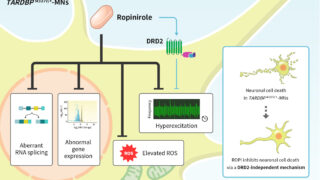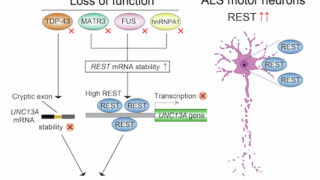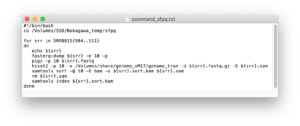iPSC-based disease modeling and drug discovery in cardinal neurodegenerative disorders
iPS細胞技術を用いた代表的な神経変性疾患に対する病態モデリングと創薬研究に関する最新の知見を総説としてまとめました。

Abstract: It has been 15 years since the birth of human induced pluripotent stem cell (iPSC) technology in 2007, and the scope of its application has been expanding. In addition to the development of cell therapies using iPSC-derived cells, pathological analyses using disease-specific iPSCs and clinical trials to confirm the safety and efficacy of drugs developed using iPSCs are progressing. With the innovation of related technologies, iPSC applications are about to enter a new stage. This review outlines advances in iPSC modeling and therapeutic development for cardinal neurodegenerative diseases, such as amyotrophic lateral sclerosis, Parkinson’s disease, and Alzheimer’s disease.
Author: Hideyuki Okano, Satoru Morimoto
Journal: Cell Stem Cell 2022;29(2):189-208.
投稿者プロフィール

- Project Associate Professor
-
Satoru Morimoto, M.D., Ph.D.
Keio University Regenerative Medicine Research Center (KRM)
Project associate professorResearch Gate Building TONOMACHI 2, 4B, 3-25-10, Tonomachi, Kawasaki-ku, Kawasaki-shi, Kanagawa,
210-0821, Japan
最新の投稿
 ノンドメインブログ2025.09.05第六節 カハールのドグマに挑む、神経幹細胞研究へかじ舵を切る
ノンドメインブログ2025.09.05第六節 カハールのドグマに挑む、神経幹細胞研究へかじ舵を切る 令和7年度(FY2025)2025.08.24Ropinirole Functions Through a Dopamine Receptor D2-Independent Mechanism to Ameliorate Amyotrophic Lateral Sclerosis Phenotypes in TARDBP-Mutant iPSC-Derived Motor Neurons
令和7年度(FY2025)2025.08.24Ropinirole Functions Through a Dopamine Receptor D2-Independent Mechanism to Ameliorate Amyotrophic Lateral Sclerosis Phenotypes in TARDBP-Mutant iPSC-Derived Motor Neurons 令和7年度(FY2025)2025.08.24ALS-associated RNA-binding proteins promote UNC13A transcription through REST downregulation
令和7年度(FY2025)2025.08.24ALS-associated RNA-binding proteins promote UNC13A transcription through REST downregulation ノンドメインブログ2025.08.24第五節 生命科学の世界への助走、Musashi発見が起爆剤に
ノンドメインブログ2025.08.24第五節 生命科学の世界への助走、Musashi発見が起爆剤に


